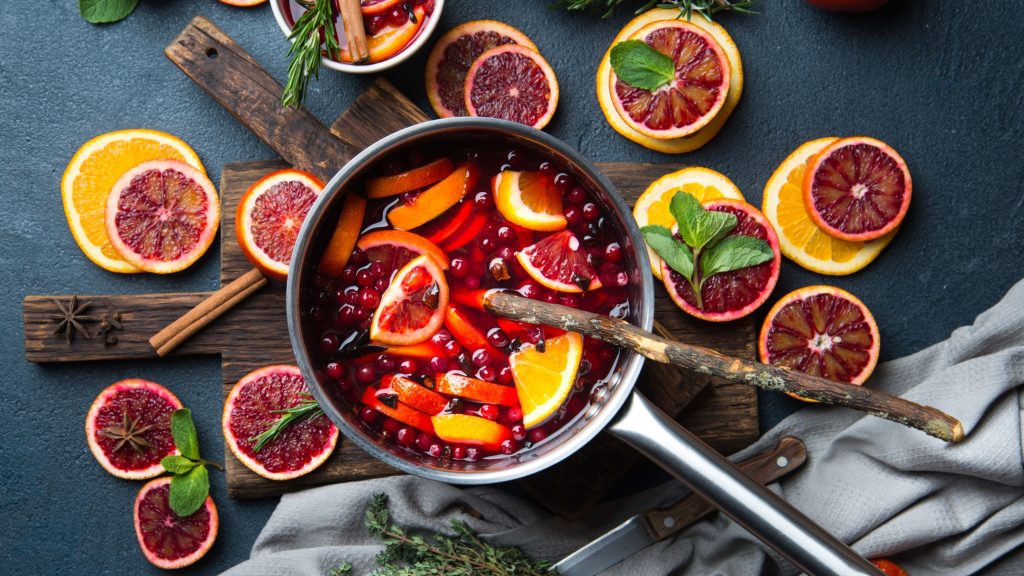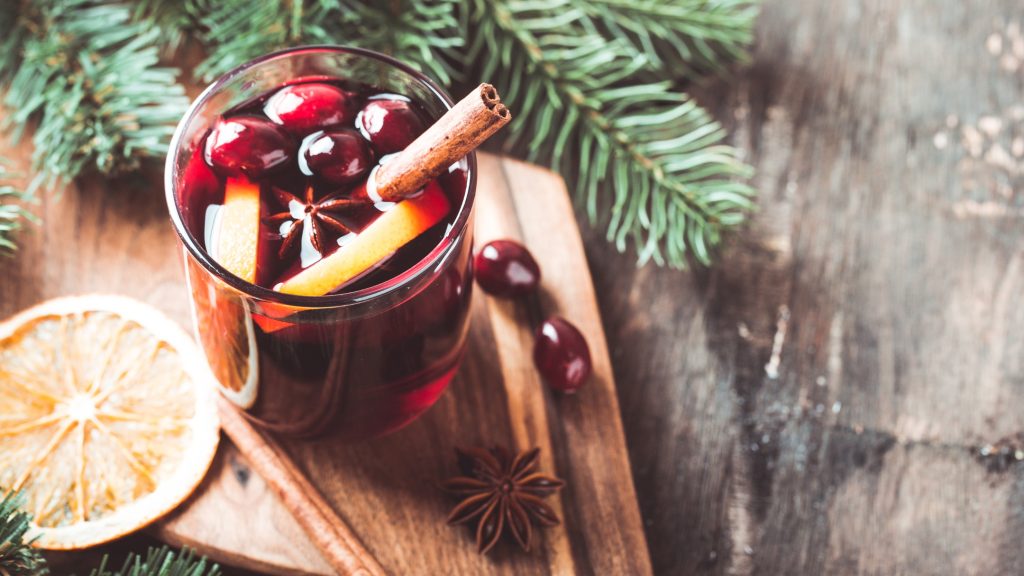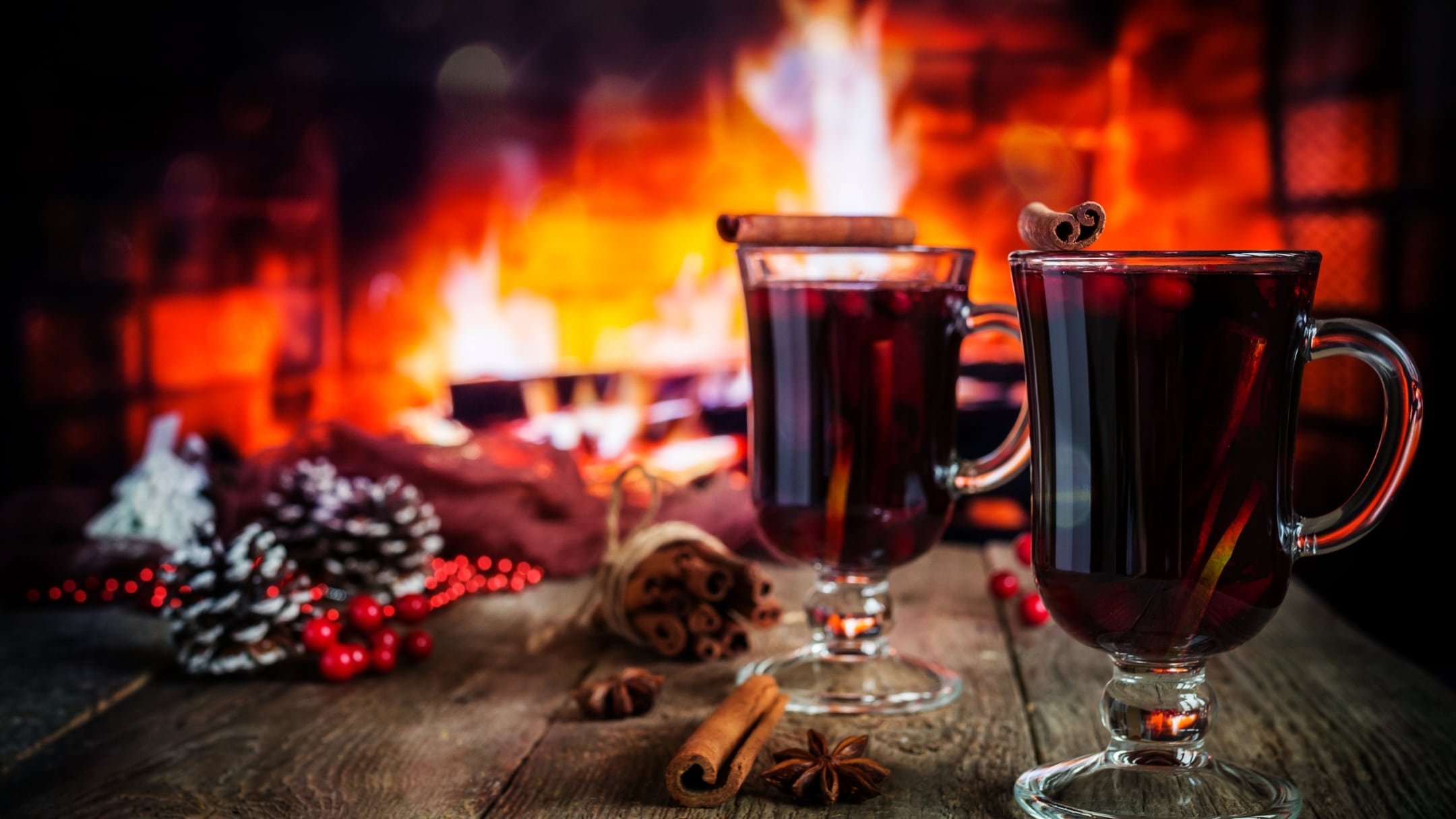It doesn’t matter where you find yourself these days, apres ski or roasting the traditional pig, through the snowm in the mountains or in the middle of the ice storm on the seafrshore: mulled wine, despised by snob connoisseurs, but loved by everyone else, is without the drink the season. No doubt about it.
The same basic ingredients for mulled wine, anywhere in the world
Most of the time, when it comes to mulled wine, the basic ingredient is red wine – although there are some small exceptions. At least one chopped fruit is added to it – apple or orange, mostly. The world is divided, however, on how to sweeten the mulled wine, sugar or honey? As for spices, you will most often find, wherever you go in the world, cloves and cinnamon, to which nutmeg, vanilla or ginger are often added. The classic recipe, used in most parts of (contemporary) Romania is:
- one liter of red wine,
- two-three cloves,
- half a teaspoon of cinnamon or half of a stick,
- half an apple cut into slices or cubes,
- half of an orange, peeled slices or diced,
- a star anise flower (optional)
- sugar to taste (two-three tablespoons, i.e. 40-50 grams should be more than enough, but our advice is to use less and let each one sweeten their share as much as they want).
Mulled wine and cold history
How old? The first record of a heated wine enriched with spices seems to be that of Plautus (father of the pre-classical Roman theater and, implicitly, a lover of wine, like all writers!), two centuries before Christ, but mulled wine is more frequently described later, in the time of Pliny the Elder and Apicius – although we still don’t know if Apicius is a real character (Marcus Gavius), a fictional one, or the other name of the book De re culinaria, which would have only two or three recipes of to the former Roman gourmet, and many other recipes added over time.
It is not surprising, however, that the main thread of the mulled wine strat from the Roman period, since the Romans are the ones who spread the cultivation of grapevines in Western Europe, planting it in the territories they conquered.
In the medieval era, the English called mulled wine ypocras – from vinum Hippocraticum, the wine of Hippocrates. And not because they suspected it of beneficial effects on health, but because of one of the utensils. More precisely, the wine was left for a day to infuse the spices, after which it was filtered through a textile cone similar to a funnel, invented by Hippocrates. It is certain that the ypocras recipe involved the infusion with a powder made from grinding together cinnamon, ginger, galangal (desert ginger), long pepper (grains as small as poppy seeds), nutmeg, cardamom, marjoram and rosemary.
Today, in the midst of the new pro-moderation movement, you can find mulled wine without alcohol, but, just as well, on the other hand, we can find mulled wine "fortified" with vodka, at Christmas markets in Poland and Scandinavia (and, if there is one there, there are probably others also consumed within the households…).


Each country has its own mulled wine recipe
We should not be surprised that, having existed for so long, mulled wine has dozens, maybe hundreds of recipes spread all over the world.
- The famous German Gluhwein, is the only drink considered traditional for Christmas in Alsace and is prepared with oranges, anise flower, cloves, sugar, cinnamon sticks and, sometimes, vanilla sticks. Red wine is usually used, although the first Gluhwein recipe is attributed to Count Katzenelbogen, the first Riesling grower. In the "heavier" version, you can serve "mit Shuss", that is, add a small amount (20-30 ml per cup) of rum or liqueur.
- Glogg (or glug, glog, glogi) is the Nordic version of mulled wine, which keeps a lot of German spices (cloves, cinnamon, cardamom, ginger), but adds bitter oranges (Seville oranges or marmalade oranges). There are variants in which this glogg also contains added alcohol – from brandy, schnapps and whiskey to Madeira or port wines.
- In the Western Balkans, kuhano vino / kuvano vino is prepared with the same classic spices, but orange peel is also added, and the frequency of using white wine is higher than in other regions.
- In Hungary, the famous "bull’s blood" is used for mulled wine – Egri Bikaver, whose recipe differs from one area to another, but which is traditionally produced from a blend of local varieties and is considered, in its premium versions and superpremium, a true terroir wine.
- In Poland, besides mulled wine, with or without vodka, Belgian-style beers are also drunk at Christmas, prepared with the same ingredients as wine.
- In Spain it is practiced to heat a classic sangria on the stove, but the gesture is considered pretentious.
CAREFUL!
- Do not boil the wine, in order not to lose all the flavors (and most of the alcohol), it is enough to heat it up to 65-70 degrees!








